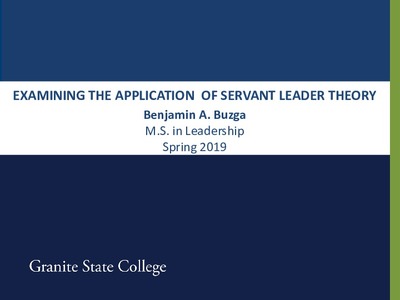| dc.description | When Robert Greenleaf introduced the servant leader theory in the 1970s, he provided a vague definition that inspired decades of development by scholars and practitioners alike. Servant leader theory prioritizes fulfilling individuals’ needs, which maximizes their potential and increases performance. Researchers have further refined Greenleaf’s theory, and by doing so, a set of key servant leader attributes has been established. While this has been an important contribution to Greenleaf’s work, translating theory into practice and defining why it is effective have been questions without definitive answers. Furthermore, there is little or no discussion regarding the application of servant leader theory within the military, or any organization with such a formal hierarchal structure. A literature analysis revealed gaps in information, and this study highlights how servant leader theory translates to improving organizational performance, and why it is effective. | |


